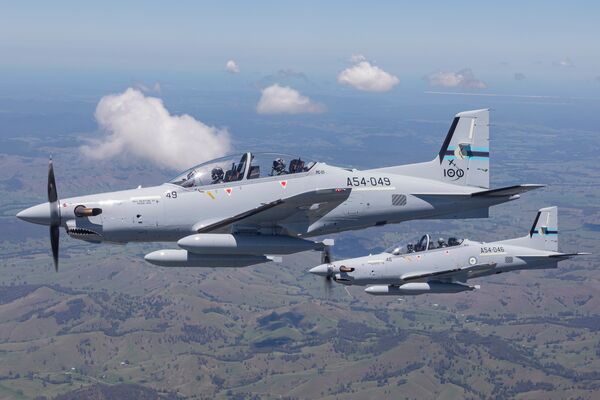
RAAF Pilatus PC-21 aircraft from No 4 Squadron are working with the Royal New Zealand Air Force to enhance New Zealand's Joint Terminal Attack Controller training. However, Australia is likely to drop the PC-21 from future JTAC training because of the aircraft's limitations. (LACW Catherine Kelly/Commonwealth of Australia)
Australia is “developing options” to better meet Joint Terminal Attack Controller (JTAC) training.
The country's JTAC training programme is being sustained by 49 Pilatus PC-21 training aircraft serving with the Royal Australian Air Force (RAAF). However, Australia's Department of Defence (DoD) told Janes that the PC-21 is only able to “satisfy up to 80% of JTAC training system live-fly requirements”.
“It does not have the ability to provide the live weapons passes needed to complete initial, currency, and proficiency training,” the DoD added.
The need for another option appears to have been highlighted amid the RAAF's deployment of a detachment of PC-21s from No 4 Squadron to New Zealand. The aircraft are participating in a combined training exercise with the Royal New Zealand Air Force (RNZAF) from 8 to 19 August.
The “exercise focuses on enhancing New Zealand's JTAC and Forward Air Control (Airborne) capabilities”, the DoD said.
The detachment, which is operating from RNZAF Base Ohakea, is conducting Close Air Support training for the New Zealand Defence Force JTACs. The RAAF contingent comprises four RAAF PC-21 aircraft and two JTAC instructors, according to the DoD.
The DoD told Janes that the AIR6016 solution, which is now being considered, seeks a “holistic solution, including live weapon drop”. This will likely mean that PC-21 aircraft will be withdrawn from JTAC training and transferred back to the Pilot Training System.
Looking to read the full article?
Gain unlimited access to Janes news and more...







